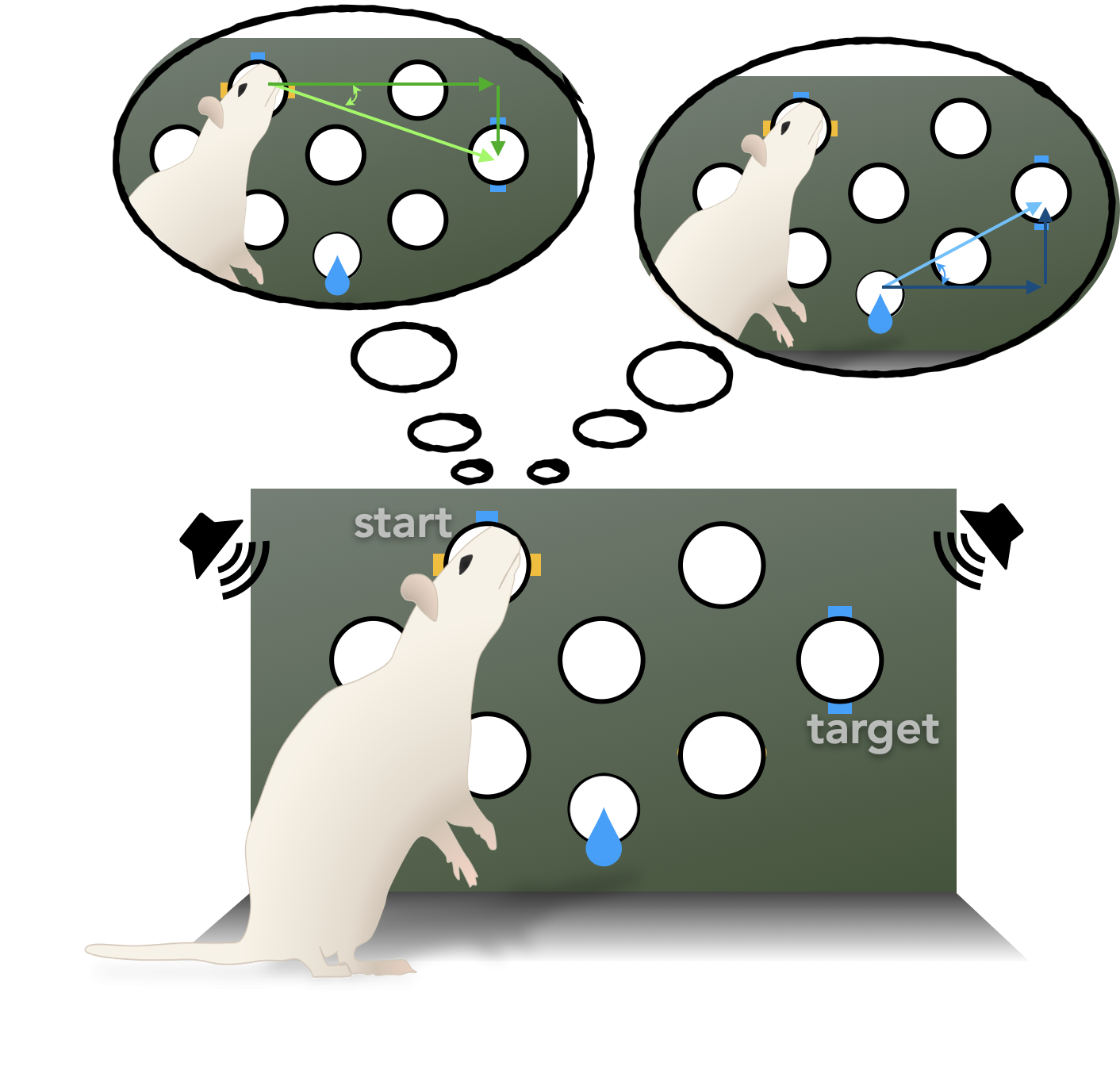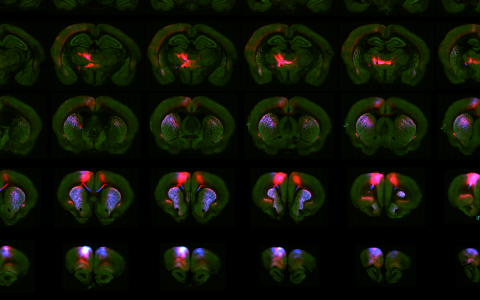
Navigating space: dual maps discovered in the brain
New study reveals both self-centred and world-centred maps in secondary motor cortex in rats
Researchers have discovered two distinct maps in the brain’s secondary motor cortex, which play a crucial role in spatial planning and navigation. The research, led by Dr Jeffrey Erlich, Group Leader at the Sainsbury Wellcome Centre at UCL, provides a new approach to studying spatial planning in rodents and could have implications for understanding neurological conditions that affect spatial attention, such as stroke.
“We discovered that the premotor cortex uses a self-centred coordinate system for spatial planning, but that it also encodes a world-centred map that is used for determining the body’s current position in the world. This self-centred and world-centred information is combined in individual neurons in a multiplicative way, which makes it easier to disentangle downstream,” explained Dr Erlich, corresponding author on the study.
The study, published in The Journal of Neuroscience, outlines how the researchers designed a novel task in rats that allowed them to differentiate between self-centred and world-centred reference frames. They recorded neural activity from an area of brain known as frontal orienting field (FOF) in the secondary motor cortex in rats and used machine learning techniques to decode the information.
“Imagine being asked where the nearest coffee shop is. You could say ‘walk forward and turn left’ (self-centred directions) or ‘walk North then East’ (world-centred directions). We want to understand how the brain transitions between these reference frames and transforms them into action,” explained Dr Erlich.
The researchers developed a task involving a wall with seven portholes. Rats were trained to place their nose into a starting porthole, after which a light would appear in another porthole, designating it as the target. The rats then had to wait for an auditory cue before moving their nose to the target porthole to receive a reward. This waiting period allowed the researchers to distinguish between planning and action in the brain.

As a rat plans to move from a start position to a target, they can consider the location of the target in "world" coordinates (shown as the target in relation to the reward port with blue vectors) or in "self" coordinates (shown as the target in relation to the current position of the rat at the start port, with green vectors). The researchers found that the self-centred representation dominated during the planning period.
“By adding the right amount of complexity to our task, we were able to have good experimental control over the timings. This approach allowed us to tease apart the different dimensions of representation,” explained Dr Erlich.
Some trials had different movement directions that led to the same target, and some had the same movement direction but led to different targets as they had different starting points. The researchers examined the neural activity during the period in between the visual and auditory cue, to establish whether the brain was planning based on the direction or final position, thereby determining if the FOF was using a self-centred or world-centred map.
“We were surprised to find a world-centred map in FOF as this has never been reported before. We want to explore what this position information is being used for and under what circumstances it becomes functionally relevant,” concluded Dr Erlich.
The team is now exploring how these dual maps are used in tasks where the instructions are given in world-centred coordinates. They are also studying how the brain plans more complex sequences of movements. The ultimate goal of this research is to further understand the fundamental principles of spatial attention and how attention is linked to planning and execution of orienting movements. This has potential implications for neurological conditions such as hemispatial neglect following a stroke, where people cannot process or shift attention to one part of the world.
This study was supported by the NYU Shanghai Doctoral Fellowship, Winston Foundation Fund, and BOCO Fund for Science and Research. The research was also supported by grants from the Program of Shanghai Academic/Technology Research Leader (15XD1503000); the Science and Technology Commission of Shanghai Municipality (15JC1400104); the 111 Project, Base B16018; the National Natural Science Foundation of China (NSFC; 31970962); NYU-ECNU Institute of Brain and Cognitive Science at NYU Shanghai; and by the funders of the Sainsbury Wellcome Centre, the Gatsby Charitable Foundation (GAT3755) and Wellcome (219627/Z/19/Z).
Source:
Read the full paper in The Journal of Neuroscience: ‘Encoding of 2D self-centered plans and world-centered positions in the rat frontal orienting field’ DOI: 10.1523/JNEUROSCI.0018-24.2024
Media contact:
For more information or to speak to the researchers involved, please contact:
April Cashin-Garbutt, Head of Research Communications and Engagement, Sainsbury Wellcome Centre
E: a.cashin-garbutt@ucl.ac.uk T: +44 (0)20 3108 8028
About the Sainsbury Wellcome Centre
The Sainsbury Wellcome Centre (SWC) brings together world-leading neuroscientists to generate theories about how neural circuits in the brain give rise to the fundamental processes underpinning behaviour, including perception, memory, expectation, decisions, cognition, volition and action. Funded by the Gatsby Charitable Foundation and Wellcome, SWC is located within UCL and is closely associated with the Faculties of Life Sciences and Brain Sciences.


